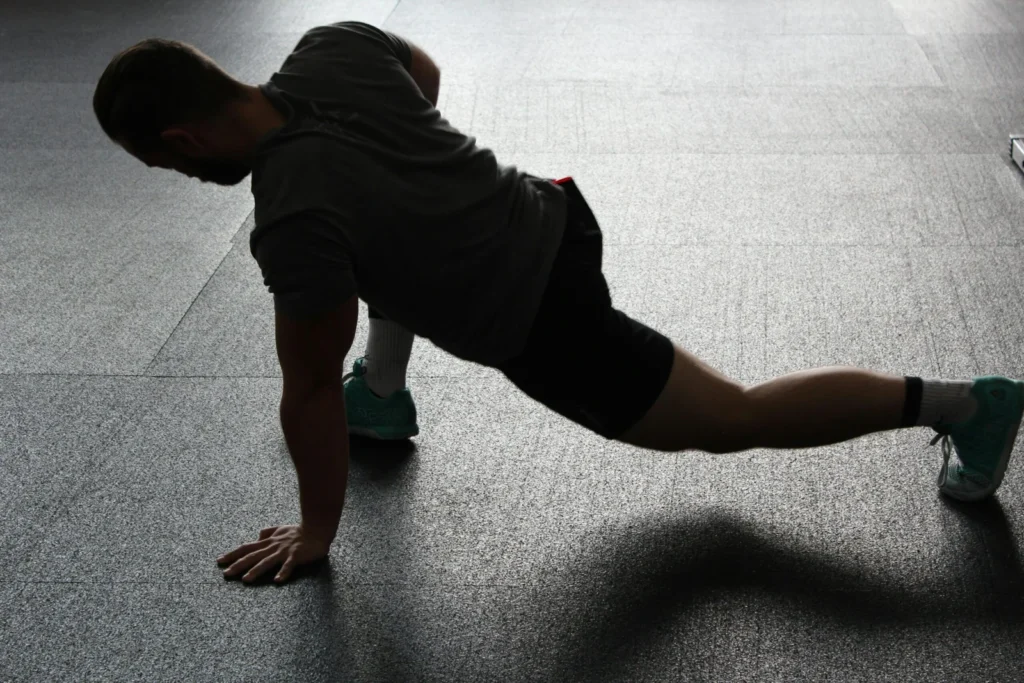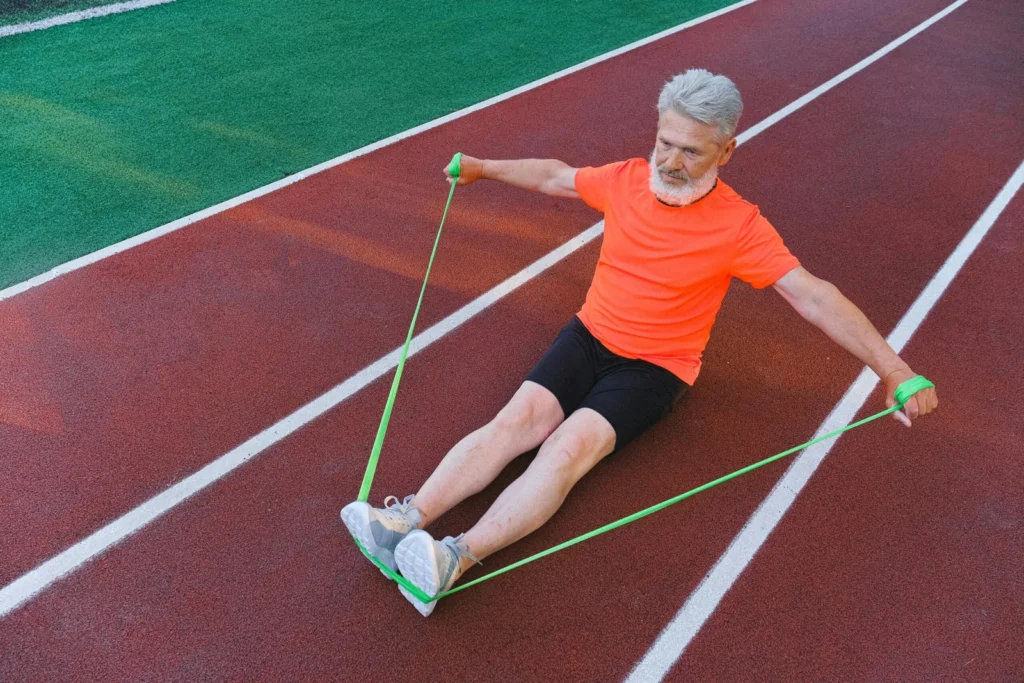Introduction
When bittersweet thoughts of fitness cloud the lives of many, most center their awareness on either weightlifting, cardiovascular workouts, or high-intensity interval training. They’re all basic, but often omitted in any well-rounded fitness routine, is one phrase called stretching. Stretching goes beyond either warming up or cooling off after a workout; it is a very big part of maintaining flexibility, improving performance, and keeping injuries at bay. In this article, we’ll share with you 10 prime reasons why stretching is so important for fitness and how these will help improve your physical health and mental well-being.
FREE
1. Increase in flexibility
Stretching is best known for its increase in flexibility. Flexibility is the range to which a muscle or joint can move without further force. For physical health, it is necessary to increase joint mobility by regular stretching and elongation of the muscles.
Without sufficient flexibility, tightness of muscles and tendons will limit your capacity to perform daily activities or engage in physical exercise. Regular stretching will help improve flexibility and make it easier to perform exercises and achieve postural and functional movement for the rest of one’s life.
2. Prevents Injury
The primary reason for the necessity of stretching during exercise is it reduces the chances of injury. Tight muscles have a limited range of motion and usually strain themselves. Stretching increases blood circulation to the muscles and improves elasticity. This makes the muscles less susceptible to strains, sprains, and tears.
By stretching before and after workouts, you help your muscles prepare themselves for the stresses they are going to endure, minimizing the chances of injury due to muscle imbalances, tendon injuries, or joint problems. Besides, stretching warms up the muscles gradually, which is especially beneficial for activities involving sudden movements or explosive force.
3. Improves Flexibility
Good posture is important for general well-being and health, and stretching has a large role in the ability to maintain good posture. Poor posture resulting from sitting for long periods, improper body alignment, and muscle imbalances leads to discomfort in the back, neck, and sometimes shoulders region.
Stretching relaxes the muscles that became too tense and weak because of bad posture habits. These include stretching the chest muscles (which tend to shorten from hunching over) while strengthening the upper back muscles. Longer periods of stretching techniques during the day have the extra benefit of rectifying imbalances, reducing pain, and provoking a better posture.
4.Enhanced Blood Flow
Stretching promotes not just flexibility but also blood flow, which is key to muscle recovery and general fitness. Stretching promotes blood circulation in the muscles and tissues, delivering nutrients and oxygen with ease.
Better blood circulation means better functioning of muscles and the elimination of wastes like lactic acid. Hence, regular stretching can reduce muscle soreness following an intense workout and fasten recovery. Good blood flow is crucial in keeping muscles and tissues functioning and healthy.
5.Reduces Muscle Tension and Stress
Muscle tension and stress very often go together. Emotional stresses, physical work, or a combination of the two can cause the muscles to become tight and tense. This muscle tension therefore produces discomfort, stiffness in the neck area, and sometimes even headaches.
Stretching is a natural way of relieving muscle tension and stress. It encourages the relaxation process through the arousal of the parasympathetic nervous system, thereby calming the body down and lowering levels of the stress hormone cortisol. By stretching in your daily routine, you reduce the chances of accumulated tension in your muscles, thus making you feel better and less stressed from beginning to end of the day.
6. Treat Joint Disorders
A joint must undergo proper movements for it to perform optimally. Whether a sport, weight lifting, or day-to-day activities are involved, free movement makes for efficiency and avoids accommodating with other muscles, a process that causes strain and injury.
Regular stretching may help to elongate the muscles and joints, and consequently expand the talent of being in motion. This permits one to perform an exercise with the utmost form for all-around fitness and enhances efficiency on the field.
7. Dow ricking boost performance
Stretching can give an immediate performance edge to the athlete and fitness enthusiast. Stretching improves flexibility, mobility, and joint function, thus allowing an athlete to perform his movements more easily, efficiently, and powerfully. For example, stretching will help the hamstrings, increasing stride in running, and hip flexor stretching will help in squatting deeper.
It also prepares the muscles further for physical activity by regulating blood circling and temperature and making the nervous system respond quicker. Thereby, speed, agility, strength, and coordination can be improved. Most importantly, stretching maintains a consistent athlete performance level and helps reach set fitness goals in a more effective way.
8. Aiding in Recovery
Recovery is a core component of any training regimen. Every time after workout, the microtears on the muscles have to be repaired and rebuilt. Stretching helps in the process of recovery by enhancing circulation and helping to release tightness and soreness in the muscles.
Static stretching can aid in the process of bringing length and tension back to normal after exercise. Stretching will contribute to muscle flexibility and elasticity, which is key for long-term mobility and flexibility. By making static stretching part of your post-workout routine, you’ll facilitate recovery and ease soreness the next day.
9. Growth of Self-consciousness
Stretching fosters mindfulness and awareness of the body; whether in strengthening, cardio exercises, or yoga itself, stretching is an important step towards a better, improved form and technique. With each stretch, you will be attuned to the limitation and strengths of your body. This, in turn, can help prevent the overexertion of the body and injuries.
Being mindful as you stretch helps with breathing control by asking you to take slow and deep breaths. This lowers stress and promotes relaxation. When your body movements and bodily sensations are in your mind, your fitness experience can be improved so that you derive more from every workout.
10. The Improvement of Mental Health and Well-Being.
Lastly, stretching has multiple benefits for mental health. The body benefits of stretching are usually paired with psychological benefits such as mood enhancement and less anxiety. Stretching triggers endorphin discharge, hormones that boost mood and decrease stress and anxiety levels.
Adding stretching into your daily routine as a warm-up, cool-down, or stand-alone routine can greatly improve your mental clarity, reduce stress levels, and just generally make you feel good. Sometimes the simple act of stopping for a minute to stretch can give you a mental reset, which will help you feel focused, calm, and centered.
Conclusion
Stretching is a most vital part of every fitness routine-conferring flexibility and a lot more. Stretching will allow ease of movement to athletes-especially in potentially injury-prone and risky sports like hockey or football. Further, it helps to avert injury, improves posture, enhances blood circulation, relaxes muscles and enables one to recover. By stretching, not only will this heighten their physical abilities, but it shall also grant one excellent well-being and release stress.
Incorporating stretching into your regular fitness program will enable you to have greater flexibility, proper mobility, and enhanced overall health. Stretching is simple to put into practice, but it is very effective in upgrading an athlete’s physical fitness and improving the quality of life of a non-athlete.



